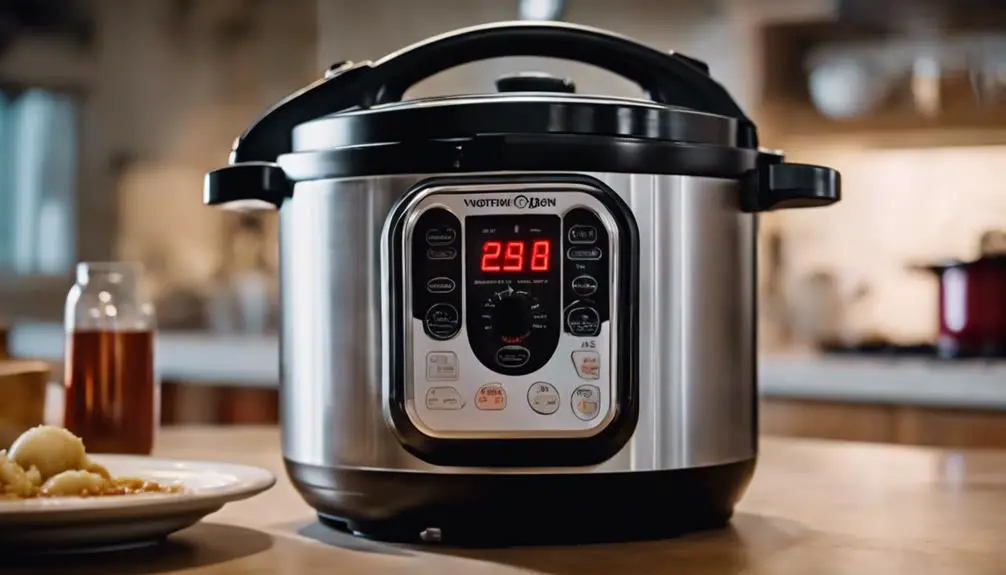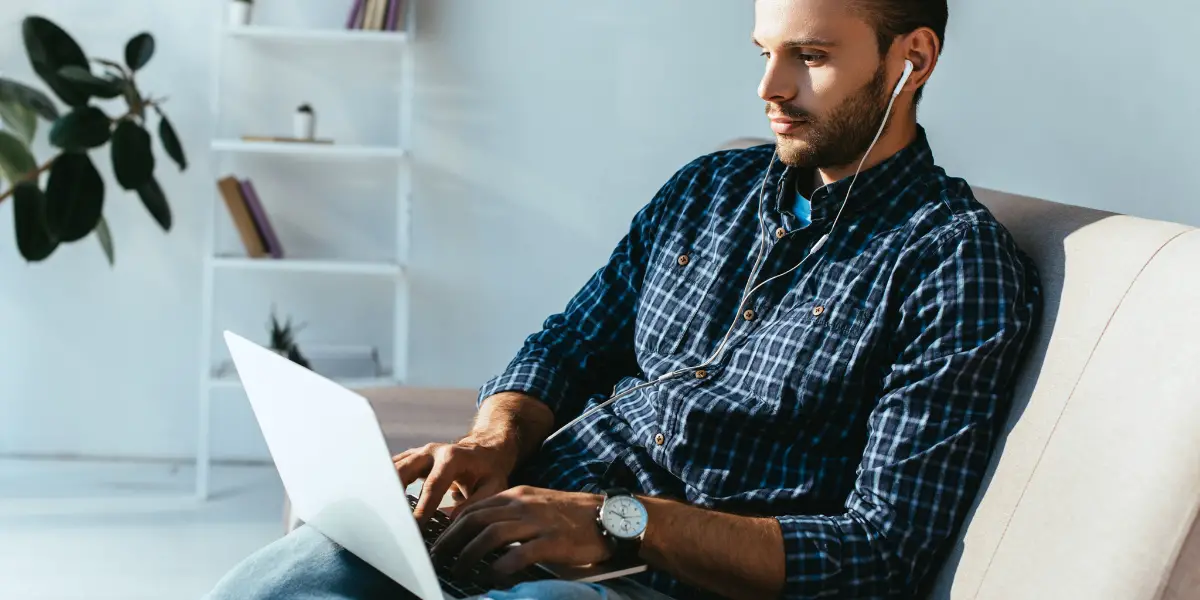You might have experienced the frustration of overcooking delicate seafood in a traditional pressure cooker, resulting in a less-than-ideal texture. But what if you could adjust the pressure levels to precisely match the requirements of your dish?
Variable pressure in a pressure cooker offers a solution to this common culinary conundrum, allowing you to tailor the cooking conditions for different ingredients. But is this feature truly worth the hype?
Let's explore the practical benefits and considerations of variable pressure settings in pressure cookers.
Key Takeaways
- Variable pressure settings offer precise control for tailored cooking outcomes.
- Speed up cooking times without compromising quality using higher pressure levels.
- Efficiently use time and energy by optimizing heat transfer and cooking reactions.
- Preserve delicate ingredients and enhance flavor retention with customized pressure levels.
Benefits of Variable Pressure Settings
Variable pressure settings in a pressure cooker offer precise control over cooking times and outcomes, catering to a variety of ingredients and enhancing cooking versatility.
By adjusting the pressure levels, you can tailor the cooking time to suit the specific requirements of different dishes. This capability is particularly useful when dealing with a range of ingredients, from tender vegetables that require gentler cooking to tougher meats that benefit from longer cooking times under higher pressure.
The ability to vary the pressure levels also expands your repertoire of cooking techniques, allowing you to experiment with slow cooking for rich stews, quick steaming for vegetables, or high-pressure searing for meats.
Moreover, these variable pressure settings are essential for high altitude cooking, ensuring that your dishes turn out perfectly even in challenging conditions.
Ultimately, the precision offered by variable pressure settings not only saves time but also helps you achieve consistently excellent results across a wide array of culinary creations.
Speeding Up Cooking Times
To speed up cooking times using variable pressure in a pressure cooker, adjust the settings to higher pressure levels. This increase in pressure significantly reduces the time needed to cook various ingredients, making meal preparation more efficient.
Utilizing higher pressure settings allows for faster cooking without compromising on the quality of the final dish.
Faster Cooking With Pressure
How can adjusting pressure levels in a pressure cooker lead to significantly faster cooking times? Variable pressure settings play a crucial role in expediting the cooking process. Here are five ways in which this feature enhances the speed of cooking:
- Higher pressure levels increase temperature and pressure inside the cooker, cooking food swiftly.
- Rapid pressure build-up at elevated settings reduces cooking durations, perfect for time-sensitive meals.
- The intense pressure at higher levels helps tenderize tough cuts of meat quickly.
- Efficiently cooking grains and legumes is achievable with the swift cooking times at high pressures.
- Faster cooking times at higher pressure settings allow for quick preparation of stews and soups.
Efficient Use of Time
Increasing pressure levels in a pressure cooker enhances cooking efficiency by accelerating heat transfer and cooking reactions. Variable pressure settings allow for faster cooking times, as the increased pressure raises the boiling point of water, cooking food more rapidly. By adjusting pressure levels based on the recipe requirements, you can significantly reduce cooking times for various dishes, saving valuable time in the kitchen.
Higher pressure levels facilitate quicker cooking by promoting heat transfer and cooking reactions, making tough cuts of meat tender in a fraction of the time compared to conventional methods. Utilizing variable pressure options in pressure cookers not only speeds up cooking but also offers the flexibility to customize cooking times according to the ingredients being prepared, optimizing overall efficiency.
Preserving Delicate Ingredients
When cooking delicate ingredients like fish or vegetables in a pressure cooker, it's essential to consider how variable pressure settings can help maintain their texture and flavors.
By adjusting the pressure levels, you can prevent these ingredients from becoming overcooked or losing their delicate consistency.
Understanding how to utilize these settings effectively is key to preserving the quality of delicate ingredients in pressure cooking.
Ingredient Preservation Methods
Preserving delicate ingredients in cooking is enhanced by the variable pressure feature of a pressure cooker, allowing precise control over cooking intensity.
- Delicate ingredients like seafood, fruits, and vegetables retain their texture and flavors better with adjustable pressure settings.
- Lower pressure settings are suitable for delicate ingredients that require gentle cooking to prevent overcooking or breaking apart.
- Higher pressure settings can be used for tougher ingredients while still preserving their natural taste and nutrients.
- Variable pressure function in pressure cookers ensures that delicate ingredients are cooked optimally without compromising their quality.
Pressure Cooker Benefits
Enhancing ingredient preservation techniques, the variable pressure feature in pressure cookers offers precise control over cooking intensity, especially beneficial for delicate foods like seafood and vegetables. By utilizing variable pressure settings, you can ensure that delicate ingredients are cooked to perfection without the risk of overcooking or undercooking.
Lower pressure levels are perfect for gently cooking fragile foods, maintaining their texture and flavor. On the other hand, higher pressure settings are more suitable for tougher cuts of meat or grains. This ability to adjust pressure levels according to the specific requirements of different ingredients makes pressure cookers a versatile kitchen tool.
With variable pressure options, you can cook a wide range of recipes with precision and efficiency, preserving the quality of delicate ingredients.
Enhanced Flavor Retention
The variable pressure settings in a pressure cooker play a crucial role in maximizing flavor retention during the cooking process. Adjusting pressure levels allows for precise control over cooking conditions, ensuring that ingredients retain their natural flavors and textures effectively.
Here are five key points to consider:
- Optimal Pressures: Different ingredients can be cooked at their optimal pressures, enhancing their flavors.
- Delicate Foods: Lower pressure settings are perfect for delicate foods like fish and vegetables, preserving their flavors delicately.
- Tough Cuts of Meat: Higher pressure settings work well for tougher cuts of meat, ensuring deep flavors and tender results.
- Customization: The ability to customize pressure levels helps in achieving consistent and flavorful cooking results.
- Across Various Dishes: Customized pressure settings ensure that a variety of dishes can be cooked with enhanced flavor retention.
Energy Efficiency
Utilizing variable pressure settings in a pressure cooker significantly optimizes energy efficiency during the cooking process. By adjusting the pressure settings to match the requirements of the recipe, energy consumption is minimized, resulting in cost savings.
Lower pressure settings suitable for delicate foods reduce energy usage compared to cooking at consistently high pressure levels. The ability to choose variable pressure options ensures that the heat intensity is tailored to the specific dish being prepared, enhancing energy efficiency.
This precision in controlling pressure levels prevents unnecessary energy expenditure, making the cooking process more sustainable and economical. With variable pressure settings, you can cook efficiently while minimizing energy waste, aligning with a goal of reducing environmental impact.
Versatility in Cooking Techniques
Achieving culinary adaptability, variable pressure settings in a pressure cooker offer precise control over diverse cooking techniques.
- Adjusting pressure settings allows for precise control over cooking temperature, ensuring perfect results for a variety of dishes.
- Customizing pressure levels enables you to cater to specific cooking requirements, whether you're tenderizing meat or preserving the texture of delicate ingredients.
- Different pressure settings provide flexibility in adapting to altitude variations, ensuring consistent cooking outcomes regardless of your location.
- The versatility of variable pressure functionality enhances the pressure cooker's ability to accommodate a wide range of culinary techniques and preferences.
- With the ability to fine-tune pressure levels, you can experiment with different cooking methods, such as braising, steaming, or slow cooking, all within the same appliance.
Incorporating variable pressure settings into your cooking routine opens up a world of possibilities, allowing you to master various cooking techniques with precision and ease.
Potential Drawbacks to Consider
Considering the intricate nature of variable pressure settings in a pressure cooker, it's essential to be mindful of potential drawbacks that could impact your culinary endeavors. One significant drawback to be aware of is the need for adjustments in cooking times when using different pressure levels. Failure to modify cooking times accordingly can result in undercooked or overcooked meals. Moreover, inexperienced users may struggle to navigate the various pressure settings, leading to confusion and errors in the cooking process.
Another drawback to consider is the potential complexity variable pressure options introduce, particularly for beginners. Selecting the wrong pressure level can adversely affect the texture, flavor, and overall quality of your dishes. It's crucial to understand how pressure levels interact with different ingredients to prevent unpleasant outcomes.
Additionally, the safety features associated with variable pressure settings must be thoroughly understood to avoid accidents or malfunctions while using the pressure cooker. Being aware of these drawbacks will help you make informed decisions and optimize your cooking experience.
Tips for Maximizing Variable Pressure Benefits
To maximize the benefits of variable pressure settings in a pressure cooker, adjust the pressure levels based on the specific food being cooked. Utilizing the appropriate pressure setting for each type of food can significantly enhance the cooking process and help in retaining essential nutrients.
Here are five tips for maximizing the advantages of variable pressure settings:
- For delicate foods such as fish or vegetables, opt for lower pressure settings to prevent overcooking and preserve their texture.
- Tough cuts of meat or legumes benefit from higher pressure levels to break down fibers and tenderize the ingredients effectively.
- Experiment with mid-range pressure settings for grains and pulses to achieve a balance between retaining nutrients and ensuring thorough cooking.
- Use the variable pressure feature to customize the tenderness and consistency of stews, soups, and casseroles according to personal preferences.
- Regularly adjust pressure levels based on the specific dish being prepared to optimize flavor extraction and overall cooking efficiency.
Frequently Asked Questions
Is It Worth It to Buy an Electric Pressure Cooker?
When considering an electric pressure cooker purchase, you'll find it worthwhile. It saves energy and time due to faster cooking. Versatile and convenient, it retains flavors while ensuring safety. The variable pressure feature enhances cooking precision.
What Are the Disadvantages of a Pressure Cooker?
Slow cooking with a pressure cooker can bring convenience, but safety concerns like maintenance issues may arise. Understanding these disadvantages helps you navigate the complexities of pressure cooking effectively.
Are Electric Pressure Cookers More Efficient?
Electric pressure cookers are more efficient for you due to quicker cooking times, lower energy consumption, and versatile cooking options. They ensure safety with automated features and provide convenient cooking results, making meal preparation easier.
Is Pressure Constant in a Pressure Cooker?
In a pressure cooker, pressure regulation ensures optimal cooking. Variable settings allow precise temperature control, enhancing safety and cooking speed. This feature promotes consistent results, retaining flavors. Understanding pressure dynamics elevates your culinary skills.
Conclusion
In conclusion, the variable pressure feature in a pressure cooker offers unparalleled control and efficiency in the cooking process. By carefully adjusting pressure levels, one can achieve optimal results in a fraction of the time.
This innovative technology not only speeds up cooking times but also ensures delicate ingredients are preserved and flavors are enhanced.
With its energy efficiency and versatility in cooking techniques, variable pressure is a must-have tool for any kitchen. Embrace the power of precision in your culinary endeavors.





